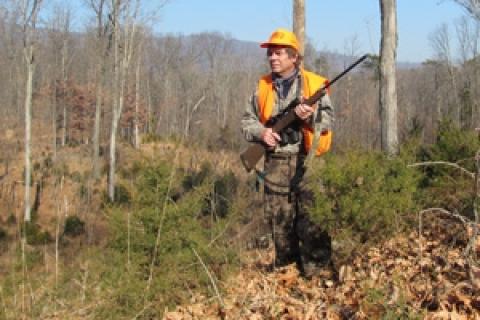
 Like most whitetail hunters, I've found over the years that sitting on a deer stand is the most effective way to harvest a deer. But also like many hunters, as the season wears on, I get tired of sitting, sitting, sitting...day after day.
Like most whitetail hunters, I've found over the years that sitting on a deer stand is the most effective way to harvest a deer. But also like many hunters, as the season wears on, I get tired of sitting, sitting, sitting...day after day.
I wouldn't call it boredom. Who could ever be bored deer hunting? But we simply get tired of using the same old method over and over.
The solution to this need for a change is simple. Try still hunting. Or maybe you call it sneak hunting or stalk hunting, depending on where you live. Every year a number of times I try this technique.
Sometimes I strike out. Other times I get lucky and sneak close enough and bag a doe for the freezer. And occasionally I harvest a truly impressive mature buck by sneaking up on it.
If you want to succeed with still hunting, you must learn to move moderately fast in poor habitat and ultra-slowly when you are in prime habitat. In late season this is particularly important because deer are extra wary from the pressure.
When you're in a good area, watch where each step falls and scan the woods ahead meticulously. Also be sure to pause often. First scour the terrain with your naked eyes. Then use 8 or 10 power binoculars to pick brush and cover apart searching for a part of a deer such as an antler tip glinting in sunlight, a twitching tail or simply a horizontal mass in the mostly vertical woods.
Once you see your quarry, determine if it's a deer you're interested in. Then sneak as quietly as possible into shooting range using terrain and vegetation for cover.
Some really good hunters can do this successfully at times with a bow. I am rarely able to get that close to a deer with my bow, though, so I usually save my compound bow for stand hunting and use my 25-year-old .30-06 Ultra Light Arms rifle, built by Melvin Forbes of West Virginia, for stalk hunts.
That way, if I can sneak to within say 150 or 200 yards, and have a clear, safe shot with a rifle rest, I'll try it. (Sure, the gun will shoot much farther, but unless I'm hunting out West I rarely feel a need to shoot farther than that for a whitetail.)
Of course you'll have to stalk in whatever terrain you have where you live. I particularly like foothills and mountains, terrain my home in the Shenandoah Valley of Virginia is famous for. I generally start low, working my way higher as the day progresses.
Deer often feed in the lowlands at night and chase does there. Then in the morning they head up the mountain to bed higher, around daylight or soon thereafter.
The morning dawned cloudy and warm recently when I headed out for a stalk hunt near my home. The wind was from the southwest. Fortunately, that was perfect for the spot I wanted to hunt.
The first half mile was uneventful. Several squirrels scampered about. A small flock of turkeys looked for acorns on a distant ridge. The mast crop was poor, though, so I doubted they were finding much.
A crow scolded from a nearby branch. But little else was moving. And I only heard two other shots from other hunters.
Then as a crested a knoll and cautiously peered through the trees, a doe suddenly walked past on my left, just 150 yards distant. I watched her carefully, knowing the rut was in progress and a buck could be following.
She eased along the top of the knoll cautiously, but unfortunately her tail wasn't crooked out and she did not look back. That made me less hopeful that a buck was on her trail.
Learn how a change in tactics yeilds a mature buck in the Shenandoah Valley at Bass Pro Shops 1Source.
- 3921 views

